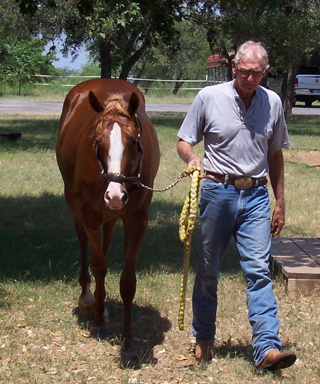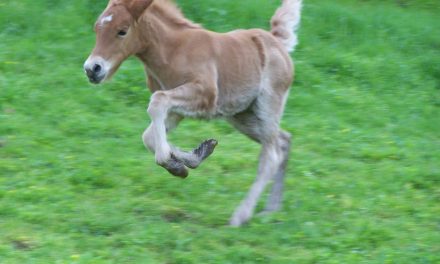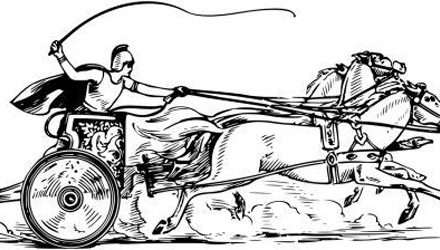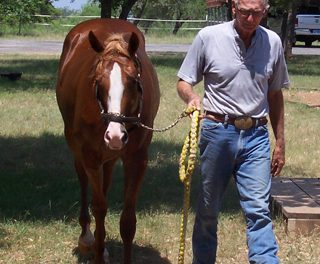A Horse, Of Course
There are basically two types of nervous horses.
There is the bold nervous and the timid nervous. And while they are very much the same, they are different.
Which is which is usually decided by observation. The way you handle and train each is a matter of knowing which is which.
Before handling any horse, it is a good idea to observe his physical characteristics, especially his head. While there are always exceptions to the rules, a nicely chiseled head with refined and pointed ears says the horse has intelligence. A big nostril which flares tells you the horse gets plenty of air, and therefore you can expect stamina. It is said looking into the eyes allows you to see into the soul. Large, soft eyes say the horse is kind, while small eyes ringed with white say “beware the rogue”.
Many breed associations say eyes set well out to the side of the head is a requirement of good conformation.
The width between the eyes of a horse, which has both binocular and monocular vision, will definitely have an effect on the horse’s reaction time and ability to concentrate. We know that animals with binocular vision alone tend to learn faster. The wider the eyes are apart the greater the tendency to use monocular vision, using one eye to see one thing, and the other eye to see something else.
Does eye placement make one horse bold nervous or another timid nervous? I can’t be positive, and neither can you, but the look of the eyes will give you the first clues.
The timid horse’s eyes will exhibit some fear, always shifting from one thing to another, always investigating in a shy way. The timid nervous horse will constantly raise and lower his head trying to get a better view of “things which might attach him.”
The bold nervous horse’s eye will be bright, and he will hold his head steady, using binocular vision to study things of interest. When he wants to get a better look at things his head movement will be determined, not fearful.
Both the timid nervous and bold nervous horse will exhibit similar initial behavior when brought from their stall. They will prance, snort, sweat, and tend to trod upon your toe. Both will spook and shy at unfamiliar objects, yet their demeanor will be different.
The steps of the timid horse will be quick and uncertain, and he will seldom ever stand still.
The timid horse will be suspicious of anyone approaching him and he’ll tense if you reach out to touch him. His whole body seems to say he is expecting something unpleasant and he is ready to flee.
On the other hand, the bold nervous horse’s steps will be solid, well planted. He is not fearful, but it is nervous energy that has him bouncing about. If brought to a standstill, this horse most likely will not move for a while, content to look off at anything which attracts his attention.
Instead of being fearful, the bold nervous horse is ready to “play-up” given the smallest excuse. Pat him on the neck and he may bring all four feet off the ground in an excited jump and kick.
While behavior is similar, the reasons are quite different, and therefore, the approach to behavior modification is quite different.
The timid nervous horse must never be forced into compliance. Conflict with this horse will only make things worse. Time, gentle handling and the building of trust is the only successful approach.
Constant discipline with the timid nervous horse, and/or the constant changing of how the horse is handled, can cause this horse to become neurotic. The temperament and character of the timid nervous horse may never change significantly, but consistent, quiet handling will build confidence.
With the bold nervous horse, discipline to gain immediate respect is the best approach. This horse must be brought under control immediately and with authority. This horse needs to know who is boss and that the boss can forcefully get his attention on business.
The bold nervous horse simply has more energy than he can handle, and his behavior is his way to deliberately causing a commotion which he thoroughly enjoys. Without behavior modification, this horse becomes an unmanageable spoiled brat who runs over his handler in an attempt to do just as he pleases.
There is another very revealing approach to knowing the personality of a horse. Observe his owner!
Enroll in the online course, Understanding Equine Behavior, for more tips about interacting with horses. Education powers up your earning potential, boosts confidence and benefits all horses. Visit www.equinestudiesinstitute.com to earn certification as a horse trainer, riding instructor or stable manager.
November 1, 2015
EB






